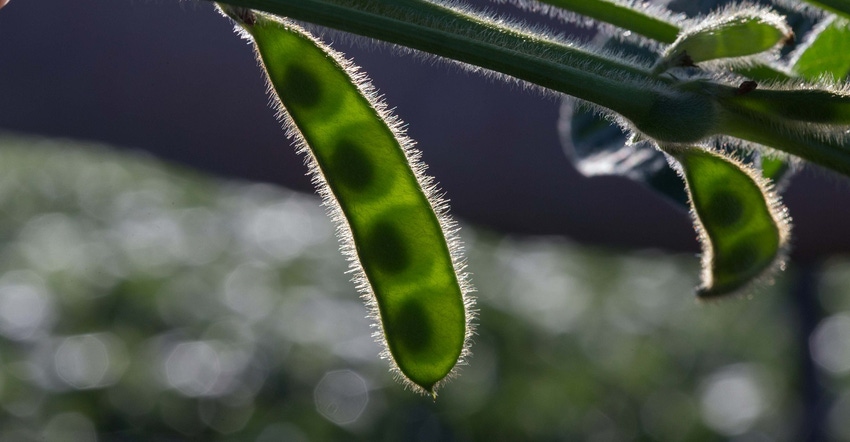March 15, 2019

Sponsored Content
“We signed a contract to grow high oleic soybeans that came with a few stipulations,” says Cass County farmer Kevin Wilson. “But the biggest difference we saw from commodity beans was the premium at delivery.”
Currently available in select markets, including northern and central Indiana, high oleic varieties offer highly functional oil for end users and top-notch field performance for farmers.
New Addition
In the summer of 2011, Wilson, who also serves as a soy checkoff farmer-leader, decided to make a change on his farm. Like a lot of farmers, his balance sheets were threatening to keep him up at night with shrinking margins and ballooning costs. With harvest coming up quickly, Wilson had already started thinking about planting for 2012.
A new line of seed was available for the first time in Indiana: high oleic soybeans. Wilson’s seed rep told him the varieties were not only built specifically to perform well on farms in his area (they were), but they also produced oil with desirable characteristics for end-use customers, such as restaurant chains and grocery store packaged food companies.
“We decided to give them a try,” recalls Wilson. He planted high oleic soybean varieties on a small percentage of his planned soybean acres in his first year as part of the program.
Easy Transition
Since high oleic varieties produce a different kind of oil, farmers keep the beans separate from other soybeans so the oil can be processed separately. Although it is an identity-preserved program, Wilson says the contract is farmer-friendly and easy to work with.
“There were hardly any adjustments I needed to make,” Wilson says.
“I don’t do anything differently in the growing process for high oleic soybeans than I do for our commodity beans. The chemicals we use, the fertilization program, the equipment — everything stays the same,” Wilson confirms. “All we need to do is keep our high oleic beans separate, much like we keep corn separate from soybeans.”
Wilson is even able to deliver his high oleic soybeans to a nearby elevator at harvest.
Widened Margins
High oleic’s benefits don’t stop with tailor-made varieties and farmer-friendly contract terms — they also offer a salve for the tightening margins many farmers have faced in recent years. High oleic contracts include a per-bushel premium that ranges in various areas based on contract terms such as delivery and storage. In Indiana this year, ADM in Frankfort is offering a premium of 40 cents for harvest delivery to approved elevators or 50 cents for post-harvest delivery to approved elevators or to ADM Frankfort directly.
“We’ve grown high oleic varieties for six years now, and we’re contracted to grow them for ADM in Frankfort again in 2019,” says Wilson. “With farm budgets as tight as they are, we only stick with a product like this if it widens our margins.”
Wilson adds, “Over the years, we’ve been able to add another $30 to $50 an acre, sometimes making the difference between earning a profit or not making anything at all.”
Big Opportunity
Although every little bit helps, high oleic soybeans offer something bigger than a one-year revenue boost. They make a top-quality frying and baking oil that’s projected to create 9 billion pounds of annual oil demand at its peak, according to a recent study by QUALISOY, an industry group that includes processors, food companies and soy checkoff farmer-leaders.
Nine billion pounds of demand would require 16 million acres of supply, and Indiana is doing its part to build the needed supply through contract programs with the ADM soybean processing facility in Frankfort. That facility has fulfilled contracts for high oleic soybeans since the program began.
“Our area offers several options for growers,” says Brandon George, commercial manager of oilseeds for ADM. “But high oleic is a great opportunity for producers to add value to their operations, even as margins are tight in the commodity market.”
ADM reported in late February that acres were still available for contract through the Frankfort facility and several cooperating elevator locations that will take harvest delivery. Although there is no hard deadline to complete contracts, George encourages farmers to act quickly.
“I know many farmers have already made preliminary seed choices,” George says, “but it’s not too late to make more from every soybean acre in 2019.”
You can find out how close you are to a participating elevator at soyinnovation.com/location, where you’ll also find contact information for setting up a contract. Of course, you can also give Brandon George a call at the Frankfort processing plant: (765) 654-4411.
About the Author(s)
You May Also Like




